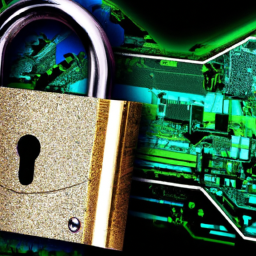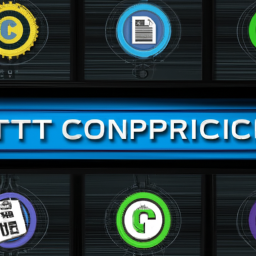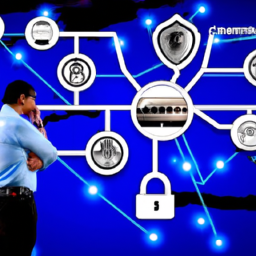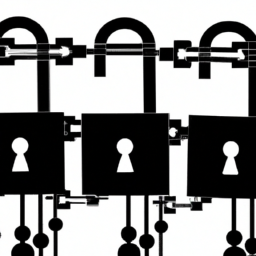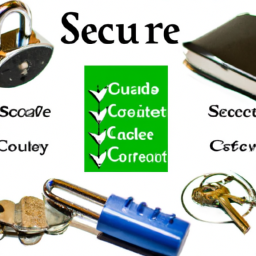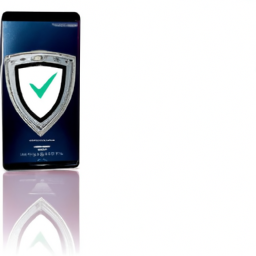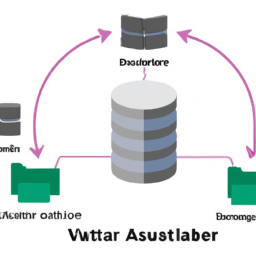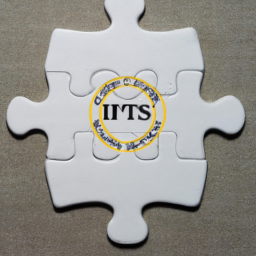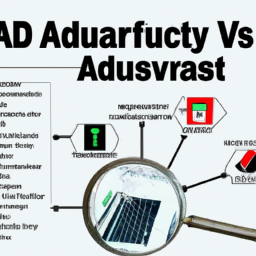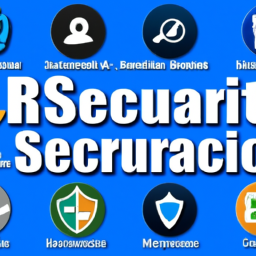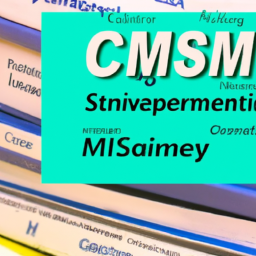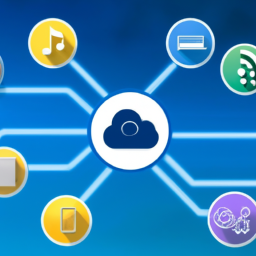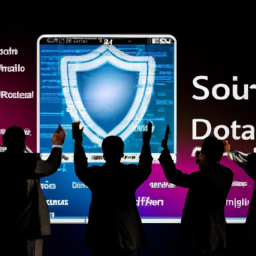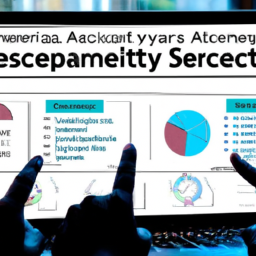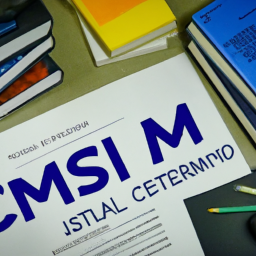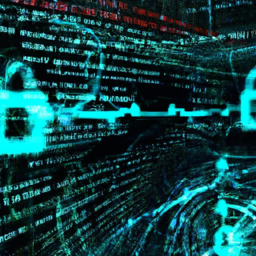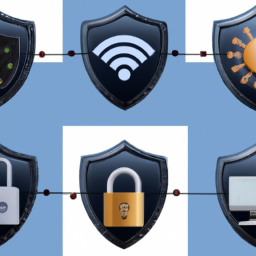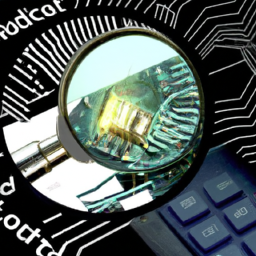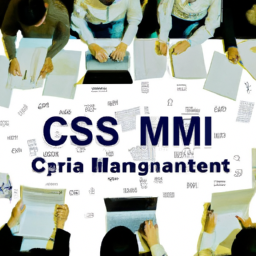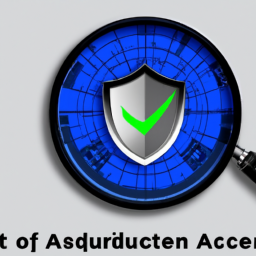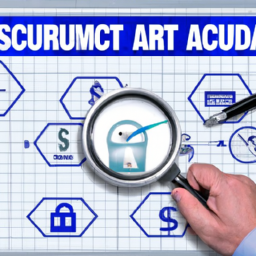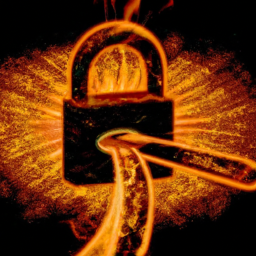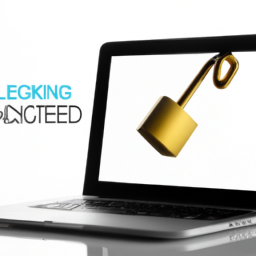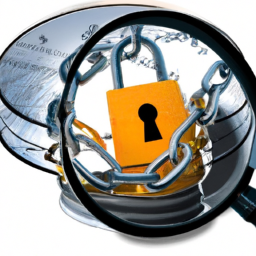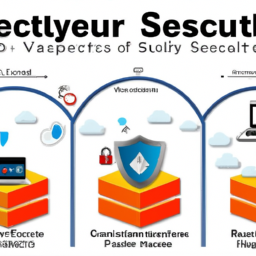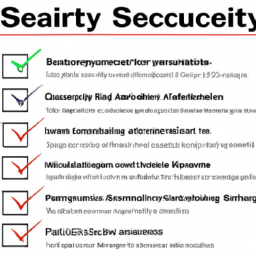Did you know that cybercrime damages are projected to reach $6 trillion annually by 2021? With the increasing reliance on digital technology, ensuring your digital security has become more crucial than ever.
In this article, we will provide you with a comprehensive guide on the best practices for safeguarding your digital presence.
To start, strong passwords and two-factor authentication are essential in preventing unauthorized access to your accounts.
Regular software updates and patches are also crucial as they address vulnerabilities that cybercriminals exploit.
Securing your Wi-Fi network and using virtual private networks (VPNs) can protect your data when connecting to the internet.
Additionally, antivirus and firewall software should be installed and regularly updated to detect and block malicious programs.
Practicing safe browsing habits and being aware of phishing attacks can help you avoid falling victim to scams.
Lastly, regular data backups and encryption ensure that your important information remains safe even if your devices are compromised.
By implementing these best practices, you can significantly enhance your digital security and protect yourself from the ever-evolving threats in the digital world.
Key Takeaways
- Strong passwords and two-factor authentication are essential for preventing unauthorized access.
- Regular software updates and patches are crucial in addressing vulnerabilities.
- Securing Wi-Fi networks and using VPNs protect data when connecting to the internet.
- Safe browsing habits and awareness of phishing attacks prevent falling victim to scams.
Strong Passwords and Two-Factor Authentication
To make sure your digital accounts are as secure as possible, you should create strong passwords and enable two-factor authentication for an added layer of protection.
Strong passwords are essential for safeguarding your accounts from unauthorized access. They should be long, complex, and unique to each account. Remembering multiple strong passwords can be challenging, but password managers can help you store and manage them securely.
Additionally, consider using biometric authentication, such as fingerprint or facial recognition, whenever possible, as they provide an extra level of security.
Two-factor authentication adds another layer of protection by requiring a secondary verification method, typically a code sent to your mobile device.
By combining strong passwords, password managers, and two-factor authentication, you significantly reduce the risk of unauthorized access to your digital accounts.
Moving on to the next section, regular software updates and patches are crucial for maintaining the security of your devices and applications.
Regular Software Updates and Patches
Stay proactive in protecting your devices by regularly updating and installing patches for your software.
Software updates and patches are essential for maintaining the security of your devices. They often include bug fixes, performance improvements, and most importantly, security enhancements. By installing these updates, you ensure that any vulnerabilities or weaknesses in your software are addressed promptly.
Additionally, consider using automated vulnerability scanning tools to regularly scan your devices and identify any potential security risks. These tools can help you stay ahead of any new threats that may emerge.
Furthermore, it’s crucial to report any software bugs or vulnerabilities you come across to the appropriate channels. This helps software developers identify and fix these issues, ensuring a more secure software environment for everyone.
With these practices in place, you can then move on to securing your Wi-Fi networks and using VPNs for added protection.
Secure Wi-Fi Networks and VPNs
Picture this: you’re at a coffee shop, sipping on your latte, and unknowingly connected to an unsecured Wi-Fi network, leaving your personal information vulnerable to prying eyes. Don’t be a sitting duck, protect yourself with secure Wi-Fi networks and VPNs.
Here are three key ways to ensure your online security:
-
Enable Wi-Fi network encryption: Always connect to networks that require a password, preferably using the WPA2 encryption protocol. This ensures that your data is transmitted securely and cannot be intercepted by unauthorized individuals.
-
Use a VPN for added protection: A Virtual Private Network (VPN) creates a secure, encrypted tunnel between your device and the internet. By using a VPN, your online activities are shielded from potential eavesdroppers, ensuring your privacy and security even on unsecured networks.
-
Regularly update your VPN and Wi-Fi software: Keep your VPN and Wi-Fi software up to date to prevent any vulnerabilities that may be exploited by cybercriminals.
By following these practices, you can significantly enhance your digital security.
Now, let’s delve into the importance of using antivirus and firewall software.
Use of Antivirus and Firewall Software
Imagine a fortress guarding your digital world, with antivirus and firewall software standing as the impenetrable gatekeepers, shielding your devices from malicious threats.
Antivirus software is designed to detect, prevent, and remove malware, protecting your system from viruses, ransomware, and other harmful software. It regularly scans your files, emails, and downloads to identify and eliminate any potential threats. However, its effectiveness depends on regular updates and a comprehensive malware signature database.
On the other hand, firewalls act as a protective barrier between your device and the internet, monitoring incoming and outgoing network traffic. Proper firewall configuration ensures that only authorized connections are allowed, blocking potential threats from accessing your system.
By using antivirus and firewall software, you establish a strong defense against digital threats.
Now, let’s explore safe browsing habits and awareness of phishing attacks.
Safe Browsing Habits and Awareness of Phishing Attacks
To ensure your online safety, it’s crucial to be aware of potential phishing attacks and practice safe browsing habits. Avoiding suspicious websites and not clicking on unfamiliar links are key behaviors to adopt. Phishing attacks often occur through email, so it’s important to be able to identify suspicious emails. Look for signs like misspellings, generic greetings, and requests for personal information. Additionally, when engaging in online shopping, prioritize security by only using reputable websites and checking for the padlock symbol in the URL bar. Now, let’s look at another important aspect of digital security: regular data backups and encryption. By regularly backing up your data and encrypting sensitive information, you can add an extra layer of protection to your digital assets.
Regular Data Backups and Encryption
Make sure you regularly back up your data and encrypt sensitive information to keep your digital assets safe and secure. Here are three important steps to take in order to protect your data:
-
Schedule regular backups: Set up automatic backups to ensure that your data is consistently backed up. This will protect you from data loss in case of hardware failure, accidental deletion, or other unforeseen events.
-
Use encryption for sensitive data: Encrypting your files and folders adds an extra layer of security. Encryption scrambles your data, making it unreadable to unauthorized users. Use strong encryption algorithms and regularly update your encryption software to stay one step ahead of potential threats.
-
Secure remote access and data storage: When accessing your data remotely, use a secure connection like VPN. This will protect your data from interception by hackers. Additionally, ensure that any data stored in the cloud or on external drives is encrypted to prevent unauthorized access.
By following these best practices, you can minimize the risk of data breaches and ensure the safety of your digital assets.
Frequently Asked Questions
How can I protect my digital devices from physical theft or loss?
To protect your digital devices from physical theft or loss, follow these best practices. First, secure your devices with strong passwords or biometric authentication.
Second, enable device tracking and remote wiping features.
Third, keep your devices physically secure by using locks or keeping them out of sight.
Fourth, regularly back up your data to minimize the impact of loss or theft.
By implementing these measures, you can significantly reduce the risk of physical theft or loss of your digital devices.
Are there any specific steps I can take to secure my online banking transactions?
To secure your online banking transactions, follow these best practices and online banking security tips.
First, make sure your computer and mobile devices have up-to-date antivirus and firewall software.
Use strong, unique passwords for your banking accounts and enable two-factor authentication when available.
Avoid using public Wi-Fi networks for banking. Instead, use a secure, private network.
Be cautious of phishing emails or suspicious links.
Regularly monitor your account for any unauthorized activity.
What are some common signs of a phishing email or website?
To identify phishing attempts, you must be able to recognize common signs of a phishing email or website. Here are some signs to look out for:
- Misspelled domains
- Generic greetings
- Urgent requests for personal information
- Suspicious attachments or links
Prevention tips for phishing attacks include:
- Keeping your software up to date
- Using strong and unique passwords
- Being cautious when sharing personal information online
If you suspect a phishing attempt, report it to the appropriate authorities and educate your employees about the importance of recognizing and avoiding phishing scams.
Is it necessary to use different passwords for every online account I have?
Yes, it’s absolutely necessary to use different passwords for every online account you have. Using the same password for multiple accounts puts all of your accounts at risk if one of them is compromised.
This is why password strength is crucial. Using unique, complex passwords greatly reduces the chances of hackers gaining unauthorized access to your accounts. Remember to include a combination of uppercase and lowercase letters, numbers, and special characters to enhance password security.
How can I ensure the security of my personal information when using public Wi-Fi networks?
To ensure the security of your personal information when using public Wi-Fi networks, follow these cybersecurity measures.
Use a virtual private network (VPN) to encrypt your data and protect it from being intercepted by hackers.
Avoid accessing sensitive information or making online transactions on public Wi-Fi.
Keep your device’s software and security apps up to date.
Disable automatic connection to Wi-Fi networks and enable a firewall for added protection.
Securing personal data on public Wi-Fi is crucial to prevent unauthorized access and potential data breaches.
Conclusion
In conclusion, by implementing these best practices, you can create a fortress of digital security. Your strong passwords and two-factor authentication act as the first line of defense, while regular software updates and patches fortify your systems.
Secure Wi-Fi networks and VPNs shield your data from prying eyes, and antivirus and firewall software stand guard against malicious intrusions.
Practicing safe browsing habits and staying vigilant against phishing attacks keeps you one step ahead. Lastly, regular data backups and encryption ensure that even if the worst happens, your valuable information remains protected.
Stay secure, stay protected.




